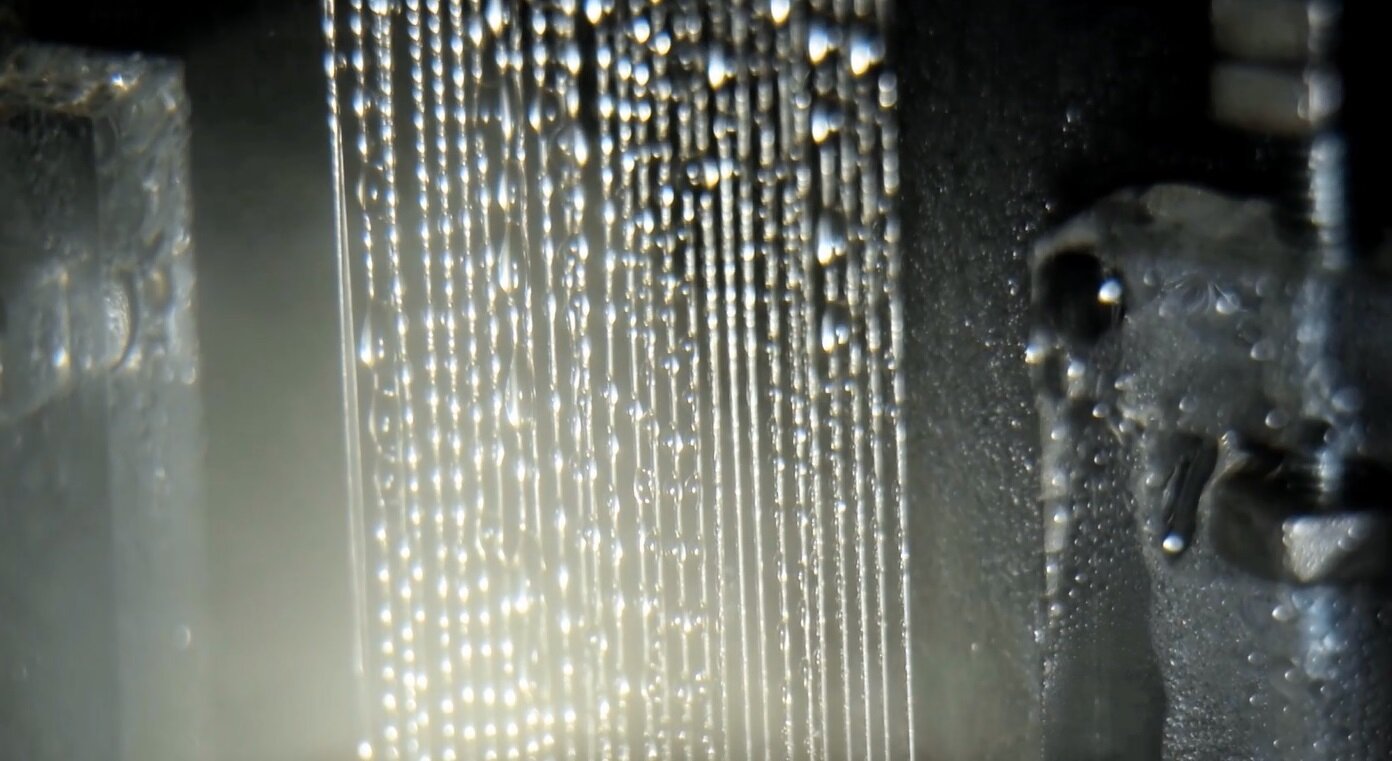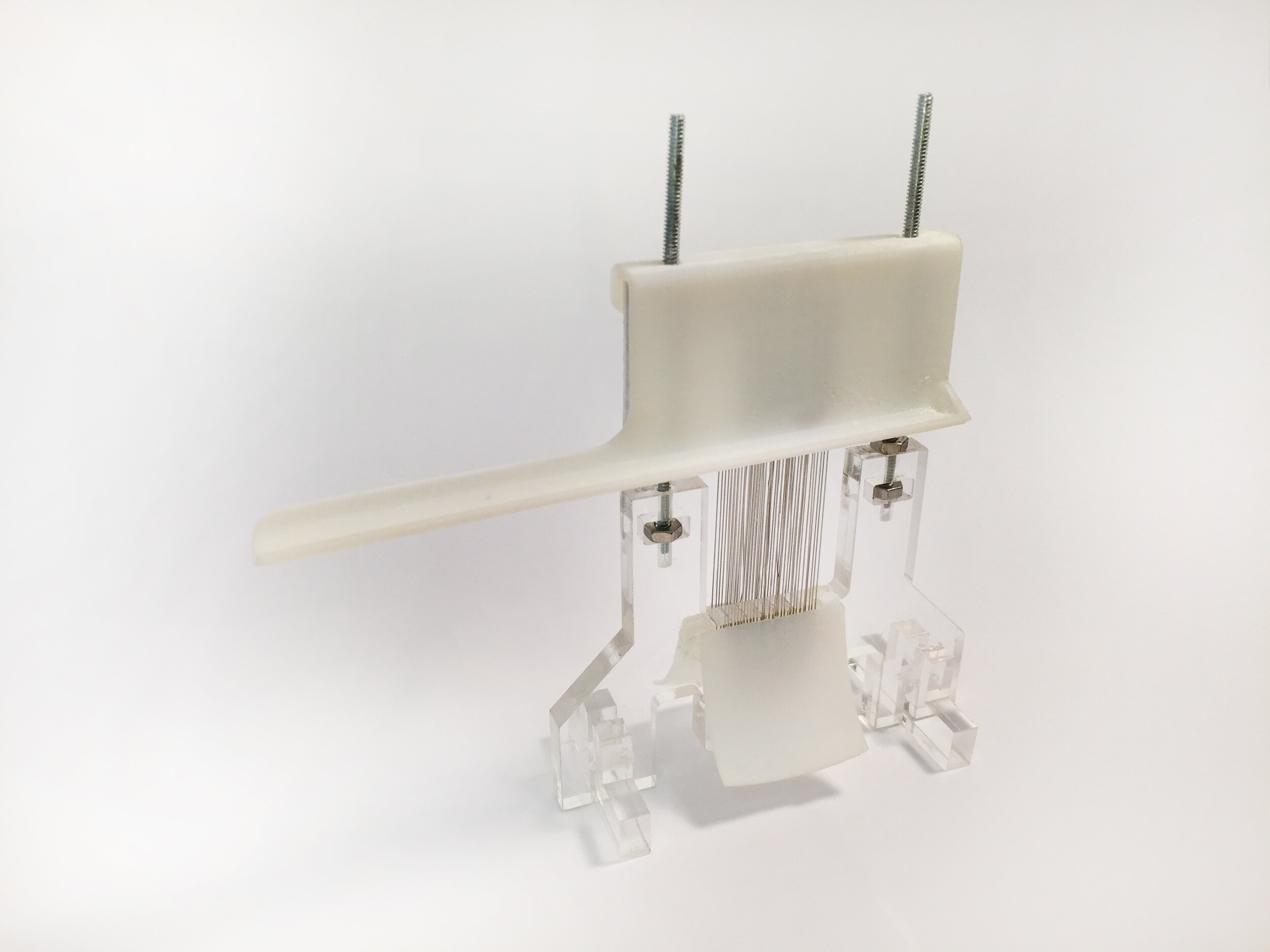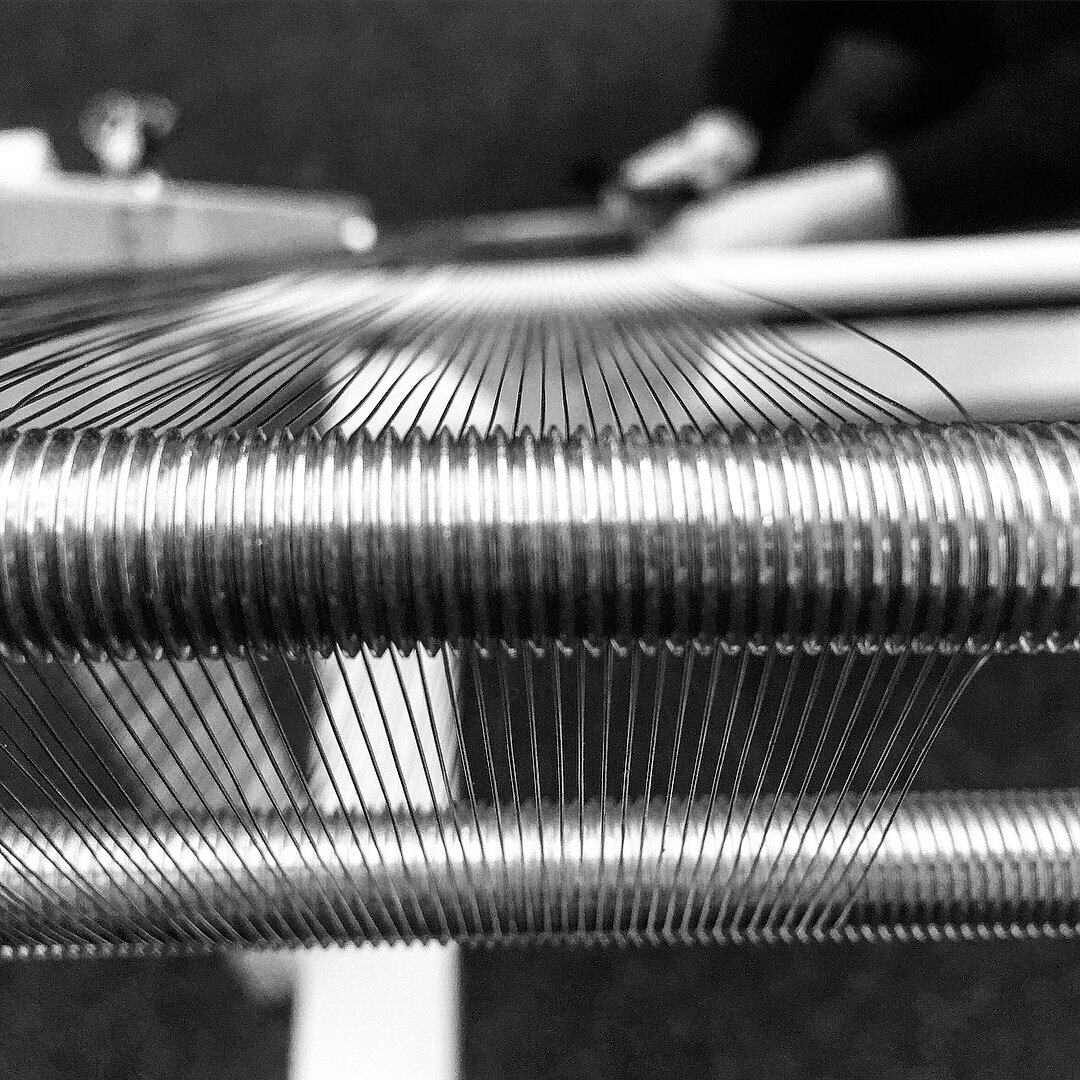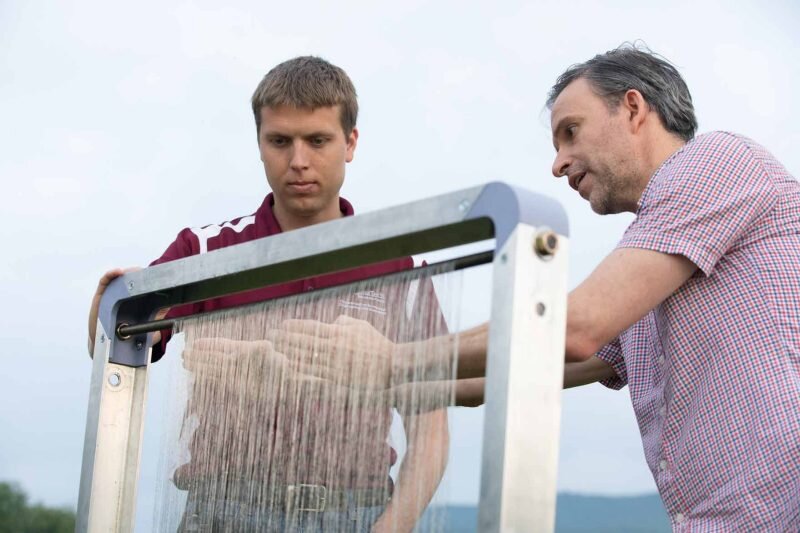
FOG HARP
Skip to 3:00 for segment on Virginia tech.
Fog Harvesting
Over the Summer-Fall of 2017, I had the opportunity to work with professors Brook Kennedy and Jonathan Boreyko in Blacksburg, VA while finishing my Bachelors degree.
About: Fog harvesting is an example of bio-mimicry where water is collected through condensation to provide clean water for drinking and irrigation. This position was in charge of constructing a full-scale prototype of a fog harvesting apparatus. Sited on patents and journal publications for contributions.


Third world countries, with high concentration of fog, currently utilize large mesh apparatuses to collect condensation for drinking as well as irrigation. This processes imitates how Redwoods collect fog, by having the fog condense on the leaves to form droplets which fall to the roots below.


Jonathan Boreyko decided to take the bio-mimicry of fog collecting in Redwoods even further, by removing the cross-members of the mesh. This theory was that there would be a higher yield if there are no square pockets in the mesh to trap the water droplets. By having a series of solely vertical wires, the water more effectively can travel down to a collection basin below. This initial prototype proved to be three times more effective than the mesh created at MIT.


With the small scale prototype in hand, I was tasked to scale up to a 1 meter square dimension. This was to help prove the concept in the field instead of strictly a lab setting. The first construction was a wooden frame, and after lessons learned, I created a metal frame to counteract the warping experienced in the first iteration.



We decided to use four threaded metal dowels to help create a consistent spacing of the wires, after a specific gauge of wire was determined. With our construction, we also allowed the flexibility to tighten the wires over time to help create more tension after the wire stretched.


